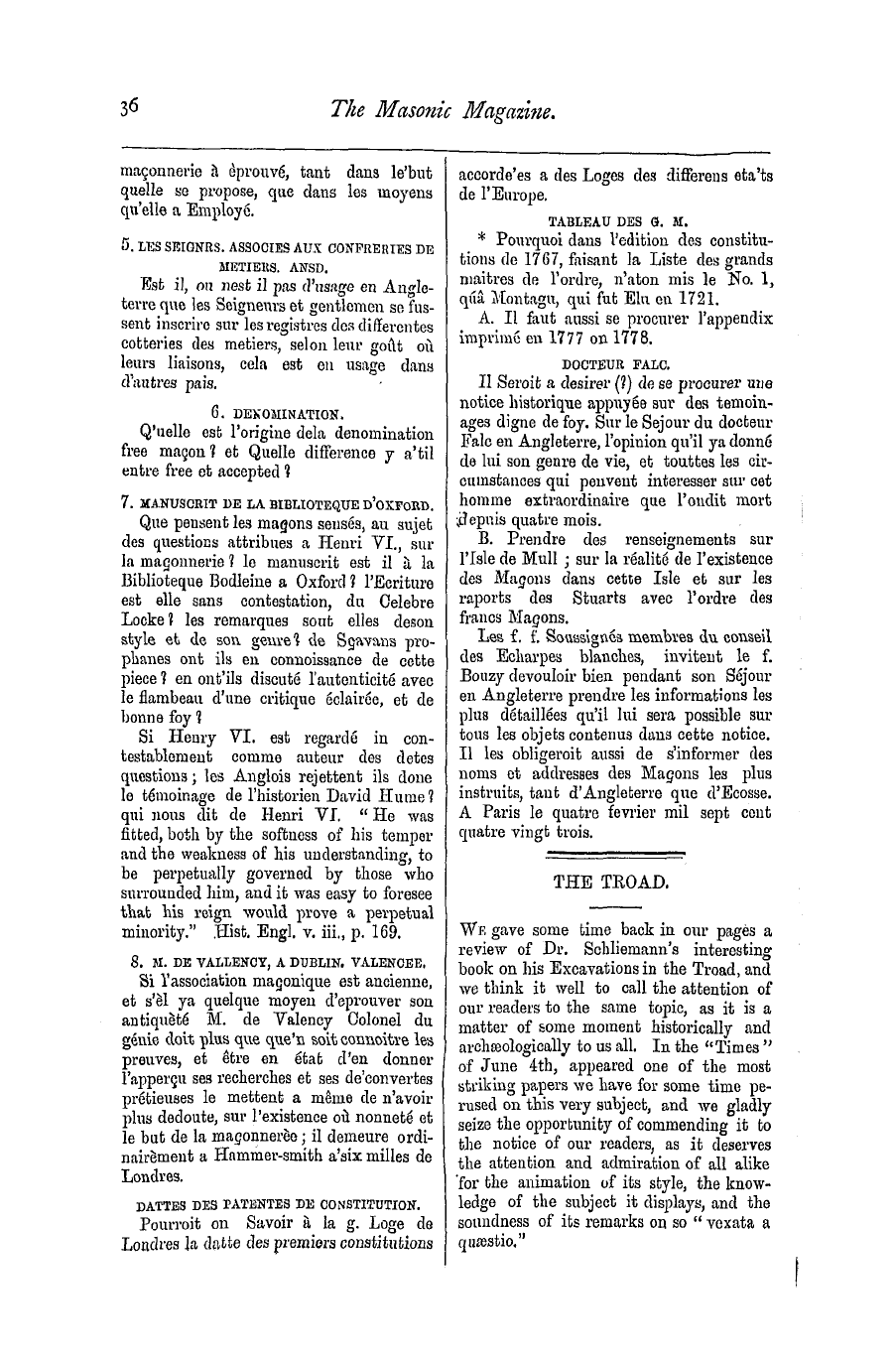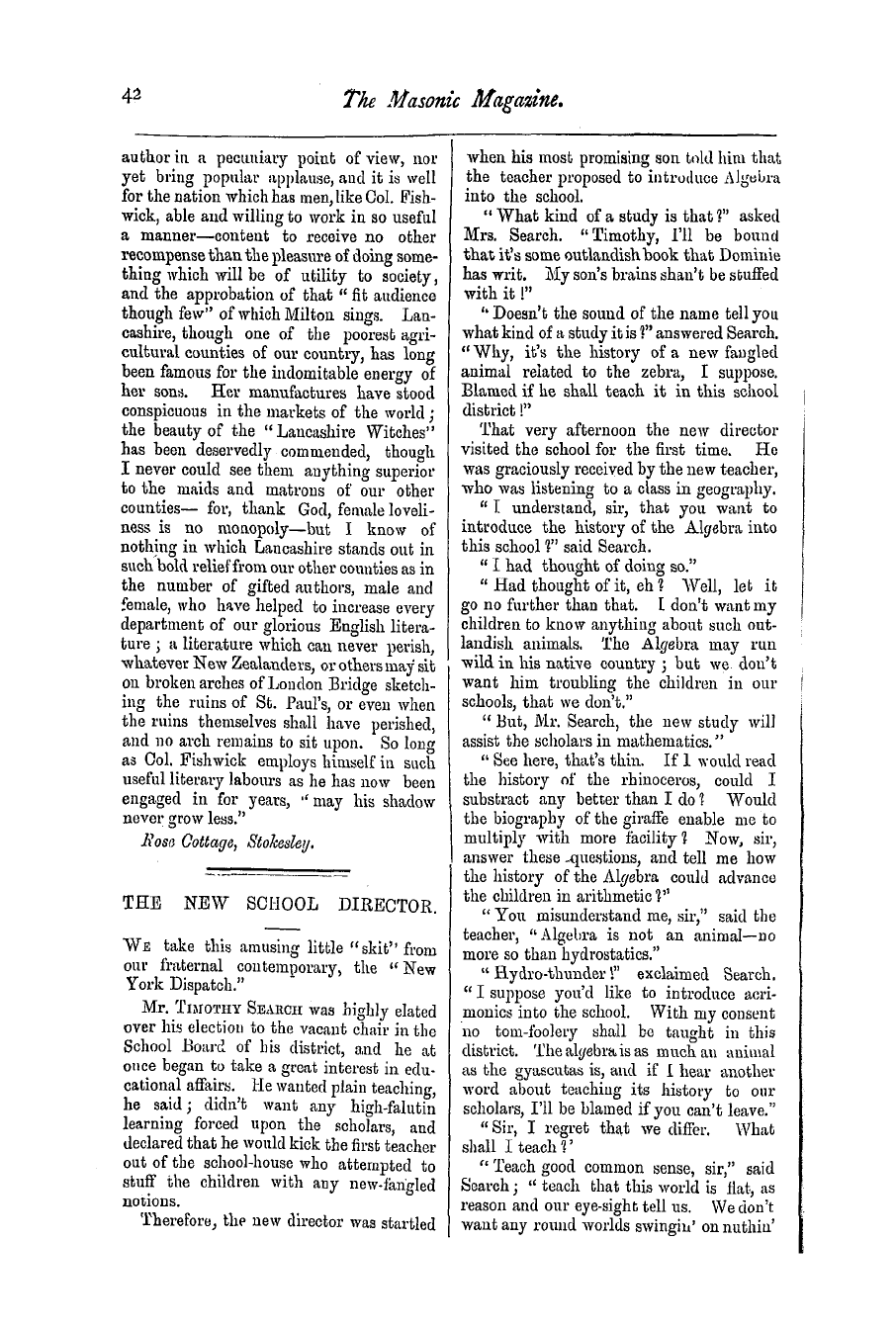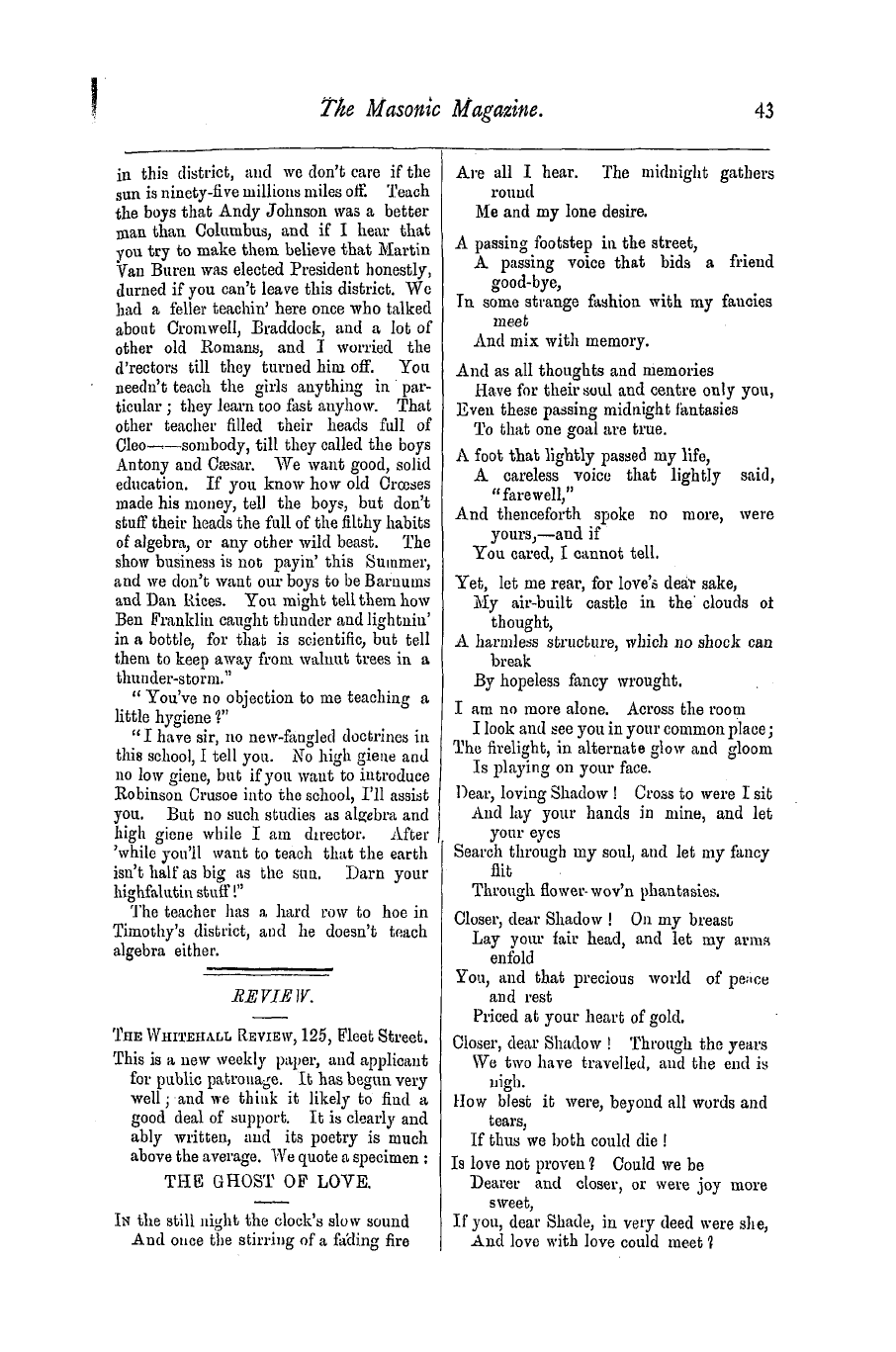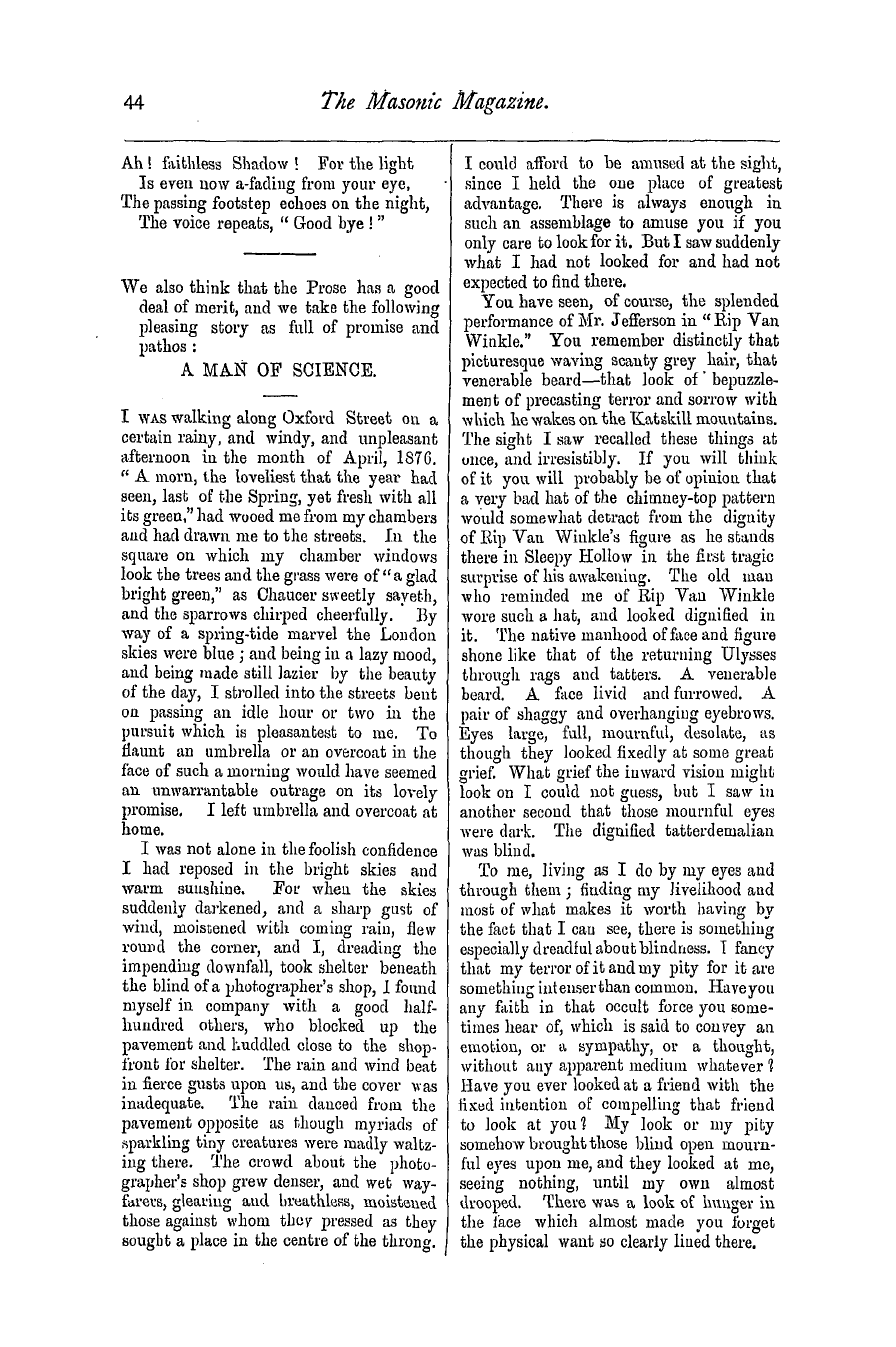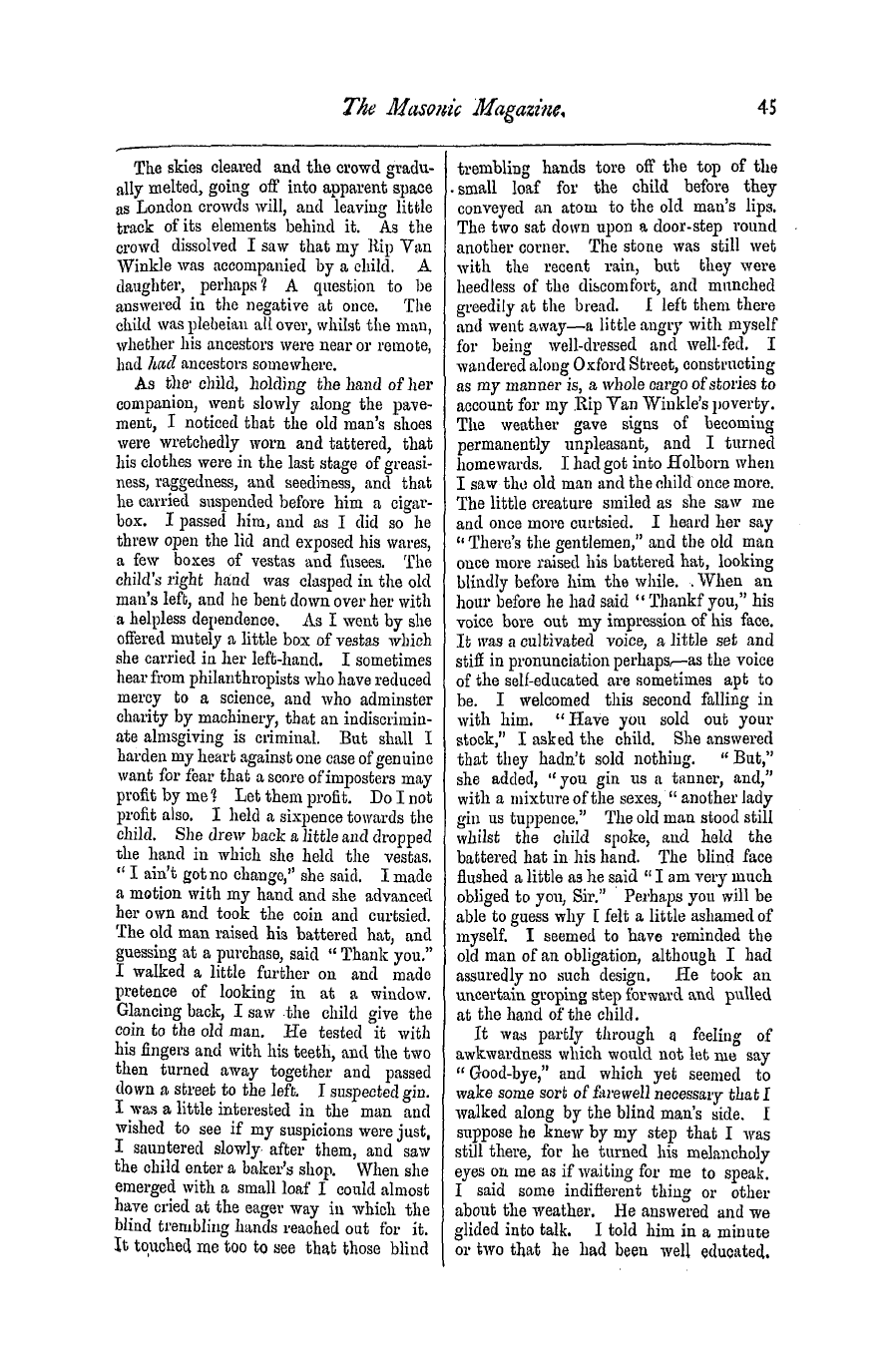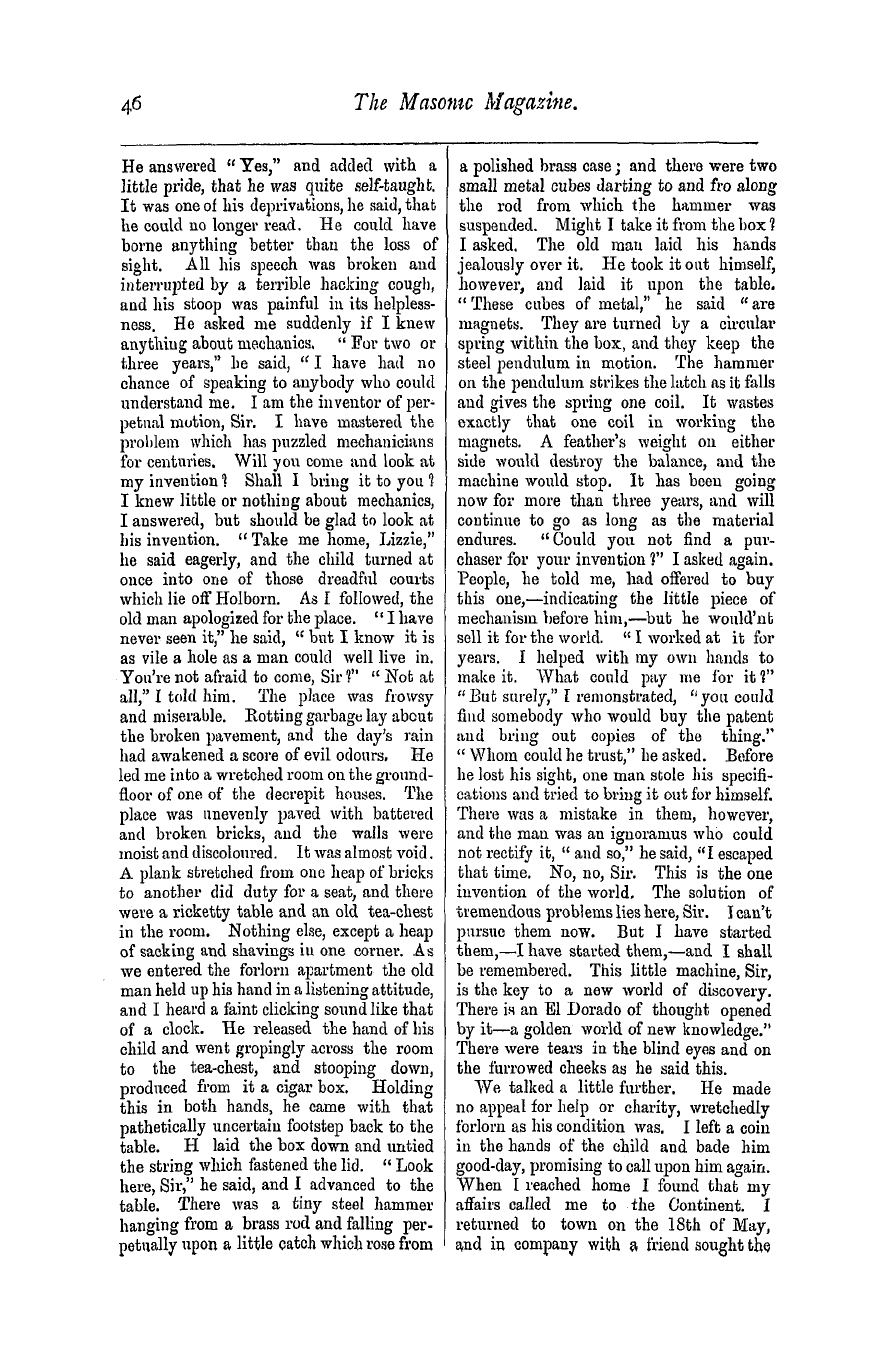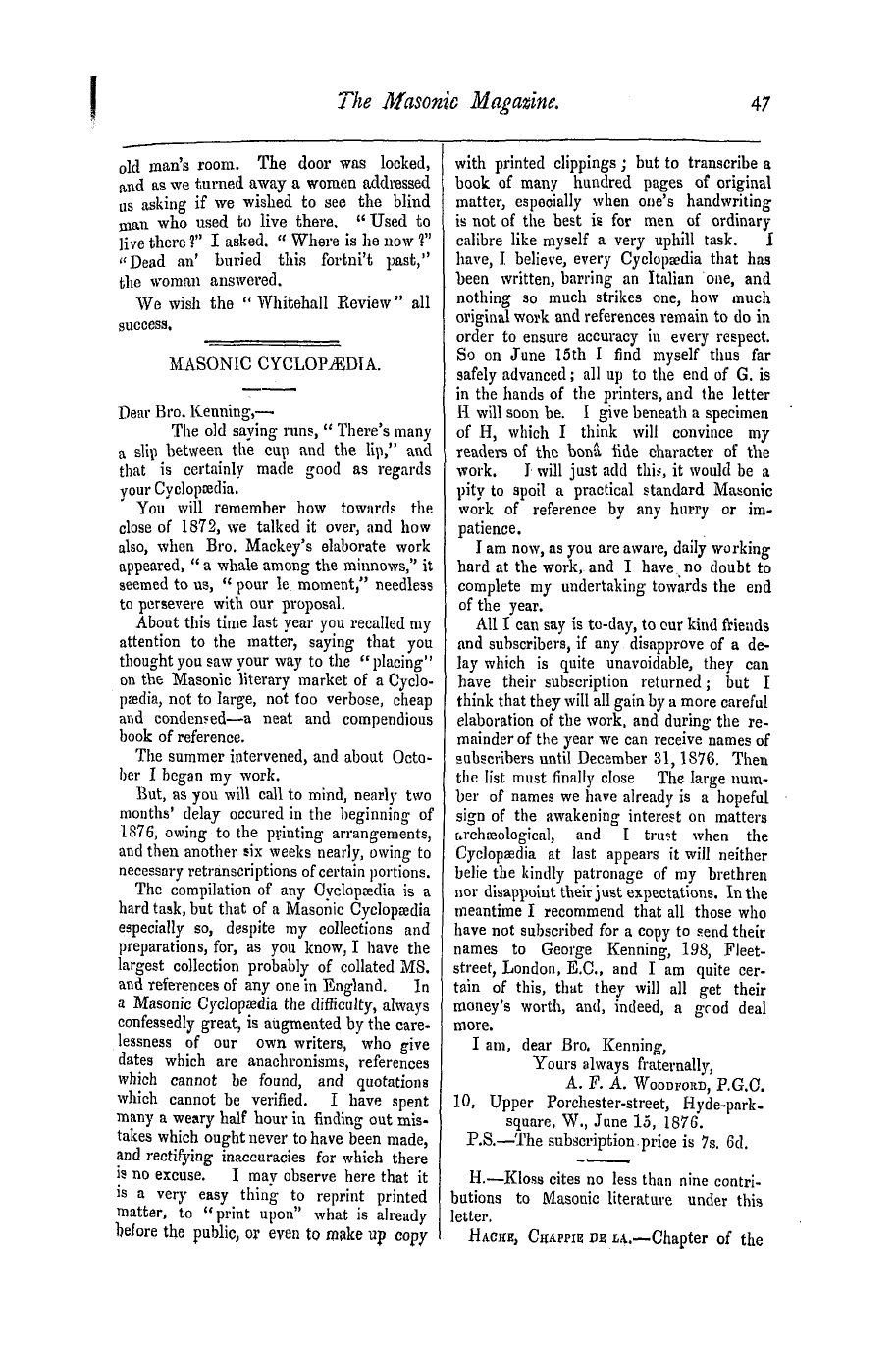Note: This text has been automatically extracted via Optical Character Recognition (OCR) software.
The Origin And References Of The Hermesian Spurious Freemasonry.
was sacred to the Eleusmian goddess—or at least connected with her worship ; for adjoining her temple in Arcadia were two gigantic stones , one of which was upright , and the other placed over it horizontally , forming altogether a correct specimen of the San cross . They were called Petroma ,
and contained an aperture in the upper surface , wherein was deposited a mask shaped like the head of a wolf ( loup ) which was borne by the aspirant at his initiation .
This ceremony has been adduced as the origin of the name of Lewis , as applied to the son of a master mason , who was sometimes called Loufton , Looton , Loveson , or Loupton ; in French , Loveteau . The soul of the perfectly initiated epopt was hence termed the young wolf (
louveteaujeune loup . ) Macrobious says the ancients observed an affinity between a wolf and the sun , whom the candidate represented when he was performing the circumambulation of the mysteries , from east to west by the south . " At the approach of the wolf , "
they said , " the flock disperses ; " alluding to the stars ,, the celestial flock , which disappear at the approach of the sun . The above is the French explanation of the origin and application of the word Lewis . Our explanation is more simple and pleasing . The Lewis , which was allowed a place amongst our emblems about the middle of the last century , is the
same given to the son of a Master Mason . In operative architecture it is an instrument used to support heavy weights which are to be raised to the higher parts of a building by being inserted into the surface for the purpose . In like manner when a Master Mason falls into the vale of years
he becomes incapable of active exertion , and is supported , succoured , and nourished by his son , the Lewis , who is able and willing to bear in his father ' s stead the burden and heat of the day . The analogy holds good in the druidical
mythology of our own island . On our ancient British coins we find an Ear of Corn , " which was an attribute of Ceres or Isis , even amongst the Britons ; for she is styled by the bards Ogyrven , Amhad , the goddess of various seeds ; and we are told that the aragoe chief of the world , or in other words the diluvian patriarch , formed the curvatures of Ry d , which passed the dales of
grievous waters , or the deluge , having the fore part stored with corn , and mounted aloft with the connected serpents . In the mystical process of initiation , the arkite goddess devours the aspirant when he has assumed the form of a grain of loheat ; and that the aspirant says of
himself that he had been a grain of tho Arkites , which had grown upon a hill . Hence the priests of this goddess are styled Hotigion—bearers of ears of corn ; and it was the office of Aneurin , her distinguished votary , to protect the ear of corn on the
height . Thus it appears that this symbol was sacred to the Arkite goddess ; or Isis the goddess of the lunette . * And further , as a grain of corn , being committed to the earth , produce other fruits in its own likeness , so it was made an
emblem of marriage ; and in ancient times wheat was cast upon the head of the bride on her return from church as an emblem of fertility . The custom was derived from the heathen . Selden says : " Quanquam sacra quce fuere in confarreatione paganica , utpote Christianismo plane adversantia
, sub ejusdem initia , etiam apud paganos evanuSre nihilomiuus farris epsius usus aliguis solennes in libis conficiendia , diffringendis , communicandis , locis saltern in mounullis semper obtinuit . Certe frequentissimus apud Anglos est et antiquitus fuit
liborum admodum grandium in nuptiis usus , quje BRIDE CAKES id est , liba spousalitia sen nuptialia apellitant . Ea quae turn a spousis ipsis confecta turn ah profiniquis amicisque solenniter muneri nuptiali data . "t
An Ear of Corn was further symbolical of the resurrection and a future stake , and is frequently used in this sense in the sacred writings . Thus the close of life at mat' . tre age , h compared to a shock of corn fully ripe . J And to the same purpose
Euripides , as quoted by Cicero in his Tuscalar questions . Quse generi humano angorem nequicquam ad fertint , Keddenda est terra terra , turn vita omnibus Metenda , ut fruges , sic jubet necessitas . Our Saviour compares himself to a corn
Note: This text has been automatically extracted via Optical Character Recognition (OCR) software.
The Origin And References Of The Hermesian Spurious Freemasonry.
was sacred to the Eleusmian goddess—or at least connected with her worship ; for adjoining her temple in Arcadia were two gigantic stones , one of which was upright , and the other placed over it horizontally , forming altogether a correct specimen of the San cross . They were called Petroma ,
and contained an aperture in the upper surface , wherein was deposited a mask shaped like the head of a wolf ( loup ) which was borne by the aspirant at his initiation .
This ceremony has been adduced as the origin of the name of Lewis , as applied to the son of a master mason , who was sometimes called Loufton , Looton , Loveson , or Loupton ; in French , Loveteau . The soul of the perfectly initiated epopt was hence termed the young wolf (
louveteaujeune loup . ) Macrobious says the ancients observed an affinity between a wolf and the sun , whom the candidate represented when he was performing the circumambulation of the mysteries , from east to west by the south . " At the approach of the wolf , "
they said , " the flock disperses ; " alluding to the stars ,, the celestial flock , which disappear at the approach of the sun . The above is the French explanation of the origin and application of the word Lewis . Our explanation is more simple and pleasing . The Lewis , which was allowed a place amongst our emblems about the middle of the last century , is the
same given to the son of a Master Mason . In operative architecture it is an instrument used to support heavy weights which are to be raised to the higher parts of a building by being inserted into the surface for the purpose . In like manner when a Master Mason falls into the vale of years
he becomes incapable of active exertion , and is supported , succoured , and nourished by his son , the Lewis , who is able and willing to bear in his father ' s stead the burden and heat of the day . The analogy holds good in the druidical
mythology of our own island . On our ancient British coins we find an Ear of Corn , " which was an attribute of Ceres or Isis , even amongst the Britons ; for she is styled by the bards Ogyrven , Amhad , the goddess of various seeds ; and we are told that the aragoe chief of the world , or in other words the diluvian patriarch , formed the curvatures of Ry d , which passed the dales of
grievous waters , or the deluge , having the fore part stored with corn , and mounted aloft with the connected serpents . In the mystical process of initiation , the arkite goddess devours the aspirant when he has assumed the form of a grain of loheat ; and that the aspirant says of
himself that he had been a grain of tho Arkites , which had grown upon a hill . Hence the priests of this goddess are styled Hotigion—bearers of ears of corn ; and it was the office of Aneurin , her distinguished votary , to protect the ear of corn on the
height . Thus it appears that this symbol was sacred to the Arkite goddess ; or Isis the goddess of the lunette . * And further , as a grain of corn , being committed to the earth , produce other fruits in its own likeness , so it was made an
emblem of marriage ; and in ancient times wheat was cast upon the head of the bride on her return from church as an emblem of fertility . The custom was derived from the heathen . Selden says : " Quanquam sacra quce fuere in confarreatione paganica , utpote Christianismo plane adversantia
, sub ejusdem initia , etiam apud paganos evanuSre nihilomiuus farris epsius usus aliguis solennes in libis conficiendia , diffringendis , communicandis , locis saltern in mounullis semper obtinuit . Certe frequentissimus apud Anglos est et antiquitus fuit
liborum admodum grandium in nuptiis usus , quje BRIDE CAKES id est , liba spousalitia sen nuptialia apellitant . Ea quae turn a spousis ipsis confecta turn ah profiniquis amicisque solenniter muneri nuptiali data . "t
An Ear of Corn was further symbolical of the resurrection and a future stake , and is frequently used in this sense in the sacred writings . Thus the close of life at mat' . tre age , h compared to a shock of corn fully ripe . J And to the same purpose
Euripides , as quoted by Cicero in his Tuscalar questions . Quse generi humano angorem nequicquam ad fertint , Keddenda est terra terra , turn vita omnibus Metenda , ut fruges , sic jubet necessitas . Our Saviour compares himself to a corn










































